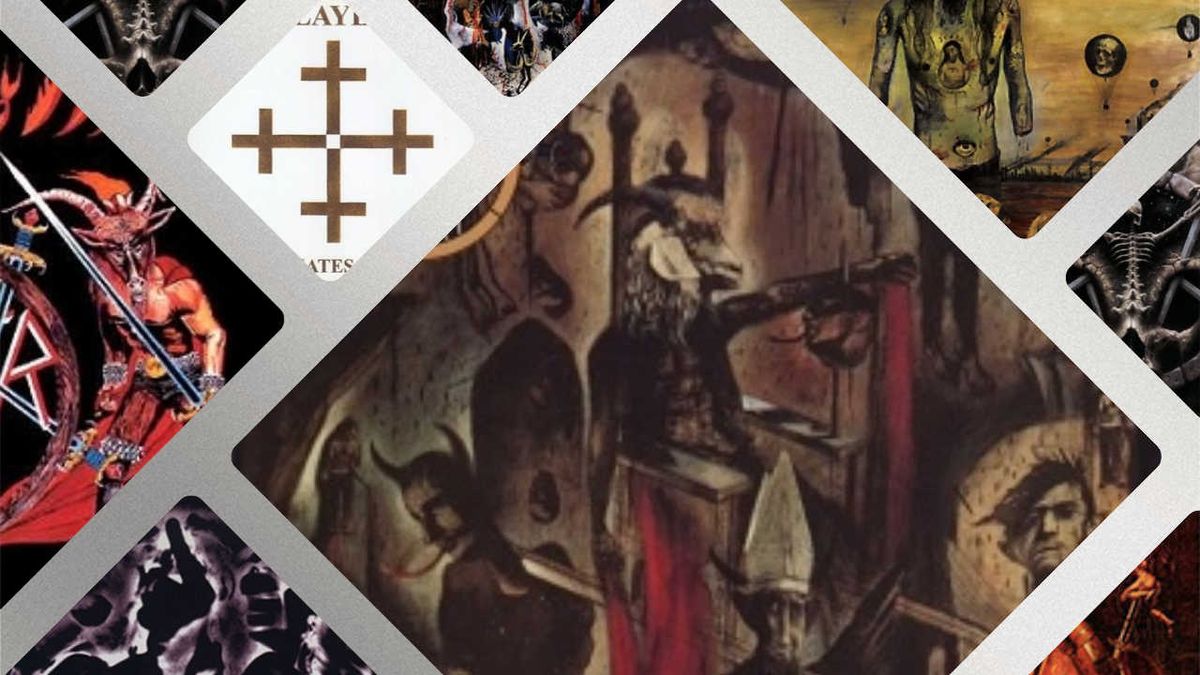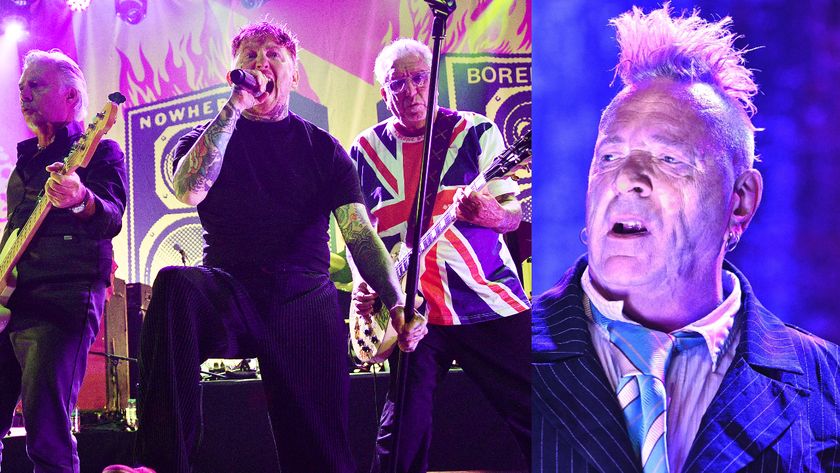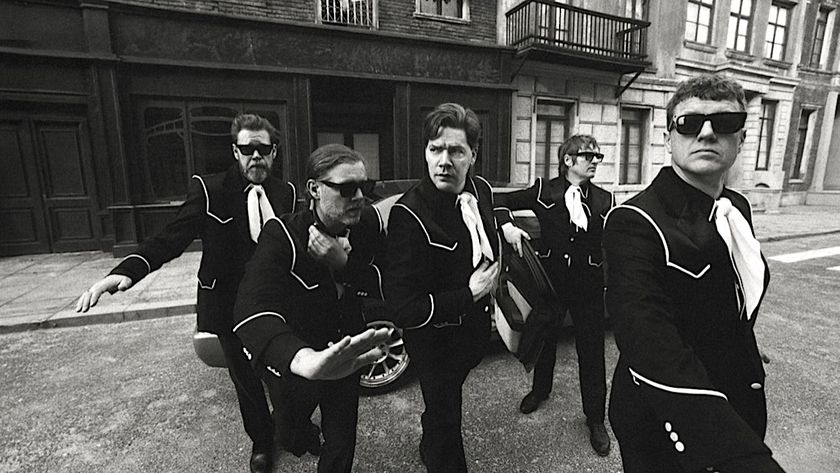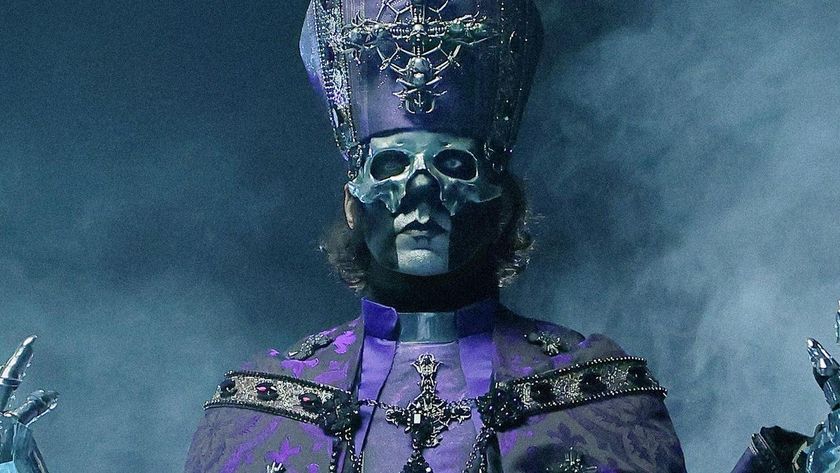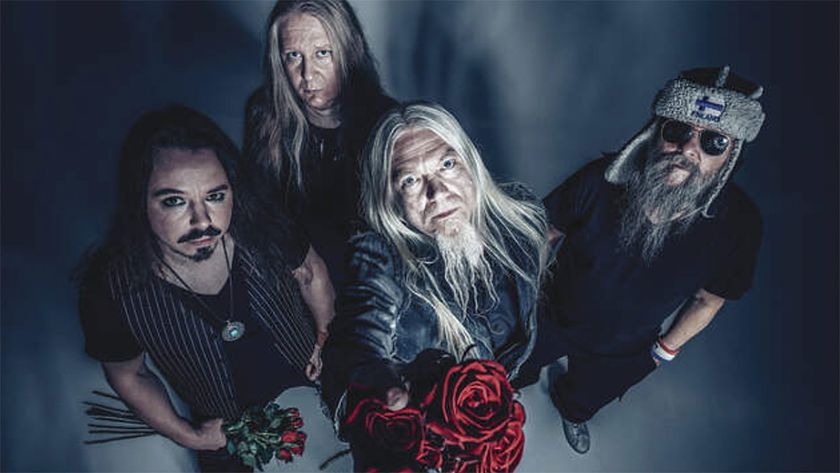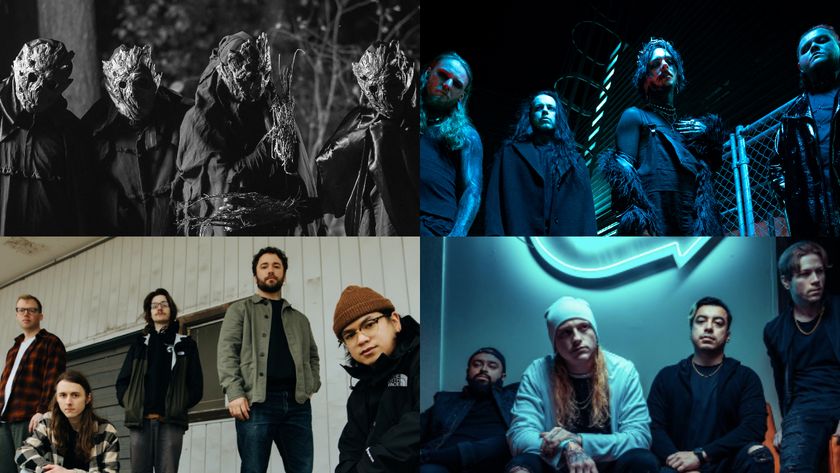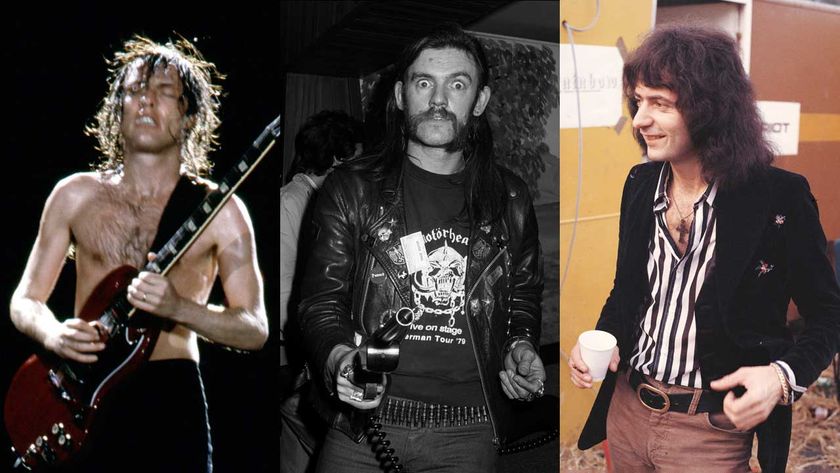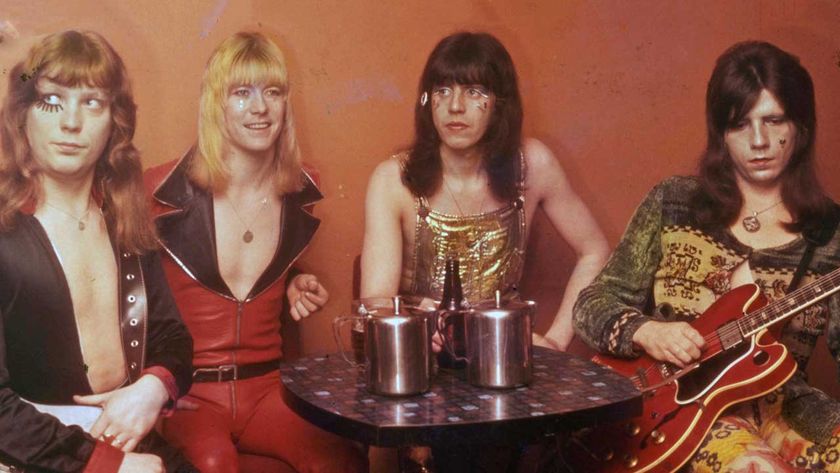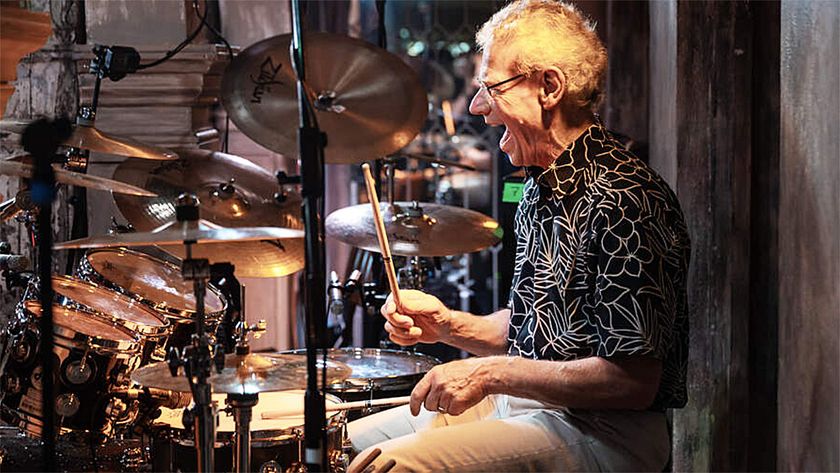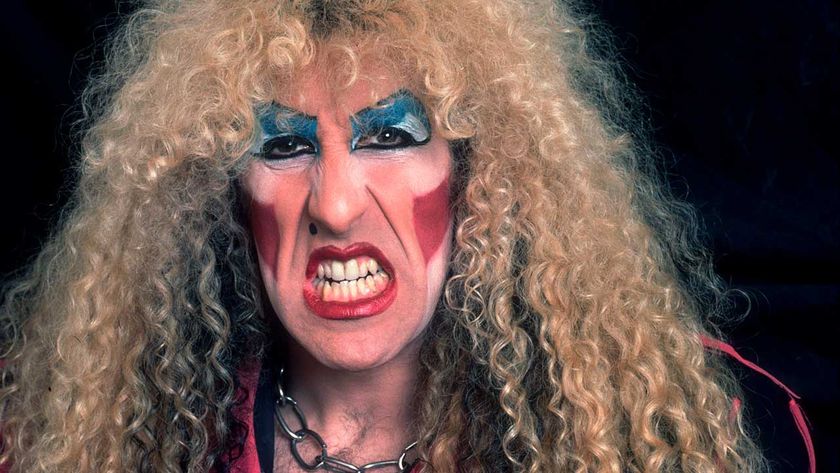Metallica may have been the originators of thrash metal, but Slayer were arguably the scene’s defining band. Between their 1983 debut album Show No Mercy debut and their last ever gig on November30, 2019, the LA band stayed true to thrash’s original harder-faster-more violent ethos. The death of Jeff Hanneman and departure of drummer Dave Lombardo may have robbed the final line-up of half its original members, but Tom Araya and Kerry King didn’t go gently into the night. Here are the 12 albums they made through their illustrious career ranked in reverse order of greatness.

12. Undisputed Attitude (1996)
Slayer chose this album to pay tribute to their punk roots, covering songs by Minor Threat, T.S.O.L. D.R.I. and the Stooges among others. There were also two songs from Pap Smear, guitarist Jeff Hanneman’s mid-80s side-project, and one new Slayer song, Gemini. The original concept had been to do a heavy metal covers album, but that just didn’t work, hence the switch. Their weakest effort.
11. Diabolus In Musica (1998)
Unlike Divine Intervention, where the music was principally written by guitarist Kerry King, this time around it was Hanneman who composed the bulk of the material, giving it a more experimental edge than perhaps anyone had expected. Hanneman claimed that he could find nothing against which to measure Slayer, so just went for his own approach. To some extent this acknowledged the nu metal scene, but typically they adapted this to their own image, not least the lyrics, which reflected their whole ‘Devil In Music’ ethos.
10. Christ Illusion (2006)
After a five-year gap, the longest stretch of time between releases in the band’s career, Slayer hit the mark with their finest album since Seasons In The Abyss. Was it a coincidence that Lombardo returned behind the kit? The sound was modern, yet dynamic. The songs were direct and fearless – they even wrote Jihad about the 9/11 attacks from a terrorist’s perspective, while the Grammy-winning Eyes Of The Insane dealt with a soldier’s post-traumatic stress disorder. Thrash was making waves again, and Slayer had come up with their own tidal wave.
9. God Hates Us All (2001)
Released on September 11 2000, the album had more realism in the lyrics, mirroring the uncertainty of the times. Musically, though, it was a little confused. Producer Matt Hyde was brought in and was keen to update the Slayer sound, something the band didn’t appreciate. So, the end product didn’t quite realise the potential the songs suggested. However, there’s enough here – especially on the Grammy-nominated Disciple and Bloodline – to ensure the band could still stride into the new millennium as metal gods.
8. Repentless (2015)
From the rampaging shock ‘n’ awe of its title track to the seething belligerence of Pride In Prejudice, Repentless made it plain that the tragic death of Jeff Hanneman was not going to dent Slayer’s sonic armour. The late guitarist’s Piano Wire aside, this was Kerry King’s album: a scowling reaffirmation of musical values, given extra impetus by the need to honour a fallen comrade. Songs like Chasing Death and Implode are as heavy and hostile as anything in the Slayer catalogue, but it was the gruesome, slow-motion squall of When The Stillness Comes that packed the biggest emotional punch. Still Slayer. Still killer.
7. Divine Intervention (1994)
Paul Bostaph came in to replace Lombardo. A fine drummer, but not quite in the same class, or with the same impact, as his predecessor. Further problems emerged because the band used several studios and two producers – Toby Wright and Rick Rubin – which gave the album a disjointed feel. Also, the guitars seemed to be mixed too low and not, as is Slayer’s way, pushed right up in your face.
6. Show No Mercy (1983)
Recorded with virtually no budget, Show No Mercy was so vicious and downright evil that it knocked most people’s perceptions of metal on its head. This was extreme, even by the standard Metallica had set at the time. Some misunderstood the band’s high speed, unrelenting approach as proving they had little of musical value to offer. Wrong! To be as convincing as this, the fearless foursome had to be more than competent. A true invocation of dark forces that can still unnerve the unwary.
5. Hell Awaits (1985)
Anyone who believes Slayer just make the same album over and over really should listen to Show No Mercy, and then this one. The progression was clear. The band were tighter, sharper and, yes, faster than before. And still as driven and angry. With a comparatively more sophisticated production, the band were carving their own niche, as witnessed on the title track, At Dawn They Sleep and Hardening Of The Arteries. This record also made its mark as one of the inspirations for the grind genre.
4. World Painted Blood (2009)
In contrast to the mixed response received by 2006’s Christ Illusion, Slayer’s 11th studio album was widely acclaimed, not least because it noisily revisited the raw, vicious vibe of the band’s early works. The likes of Kerry King’s Hate Worldwide and Jeff Hanneman’s Psychopathy Red got the balance between cutting edge oomph and underground filth just right, with then drummer Dave Lombardo powering everything along at a breathless pace. New lyrical horrors unfurled during the self-explanatorily grim Snuff, while the slithering, sinister Beauty Through Order mirrored the unsettling miasma of its bloody, controversial video. Hanneman’s last full hurrah was a gnarly triumph.
3. South Of Heaven (1988)
How do you follow Reign In Blood? It’s an almost impossible quandary, but the band elected to get even heavier by slowing down – mind you, when anyone suggests Slayer ‘slowed down’, it has to be born in mind that they were still playing riffs at hyper speed, just not going consistently into warp overdrive. They even included Judas Priest’s Dissident Aggressor as a nod to their own metal heroes. But the title track and Mandatory Suicide were the real gems.
2. Seasons In The Abyss (1990)
The last studio album for drummer Dave Lombardo, until 2006, and while it offered no discernible change in direction from what had gone before, the band’s strength of vision was clear on Dead Skin Mask and War Ensemble. Many believed that Seasons In The Abyss was the sound of Slayer stuck in a rut. However, this was actually a band in a groove, knowing precisely what they should be doing, and how to deliver it. At a time when some were saying thrash was dead, Slayer were still brimming with ideas.
1. Reign In Blood (1986)
Citing this as ‘the greatest thrash album of all time’ might sound like a convenient soundbite… until you hear it. With Rick Rubin producing, everything was taken to a height nobody would ever scale again. The playing was world class, the songs were stunning, the production balanced technology with the brute force of their live performance and, best of all, it came in at under 30 minutes, which meant that it never outstayed its welcome. From the moment opening track Angel Of Death kicks in to the last chords of closer Raining Blood, this is peerless.

What is considered the best Slayer album?
No other Slayer album comes close to matching 1986's Reign In Blood for its sheer sonic assault, frantic pace and a barrage of unsettling themes exploring death, violence, and general evil. Clocking in at just under 29 minutes, this is a thrash metal classic and is one of the best metal albums ever recorded.
What is Slayer's best-selling album?
While it is difficult to calculate precise sales figures, 2015's Repentless peaked at number four in the US album charts, while 2006's Christ Illusion earned a number five slot. But it's Seasons In The Abyss which appears to the be band's most commercially successful release and has earned gold certification from both the Recording Industry Association of America and the Canadian Recording Industry Association.
What is the heaviest Slayer album?
Sensing that they could not physically play any faster than the songs which made up Reign In Blood, the band threw their fans a curveball and changed gear (albeit slightly) with their 1988 follow-up South of Heaven. Album highlights include the title track – that opening riff – and their anti-war song Mandatory Suicide. It was also the first Slayer album to feature a cover, a crushing take on Judas Priest's Dissident Aggressor.
What was Slayer's first album?
Slayer's debut album Show No Mercy was released in 1983 through Metal Blade. It quickly became the label's biggest release and established Slayer as one of the leading bands in the thrash scene. Not only was the album notable for its vicious riffing and dark lyrics, the album artwork became legendary in its own right. Designed by their roadie's dad, the cover features the band's iconic logo, while a Baphomet brandishes a sword, resplendent in a red cape and leather Speedos.
